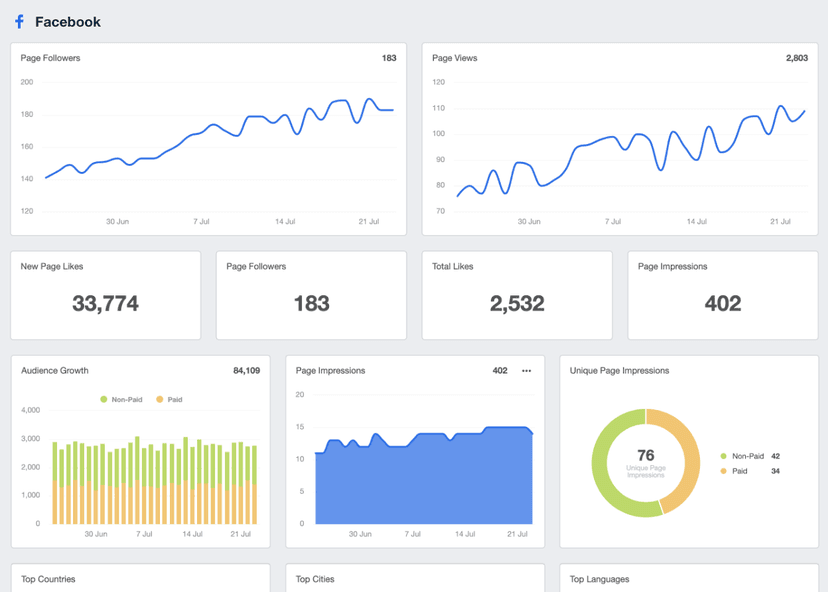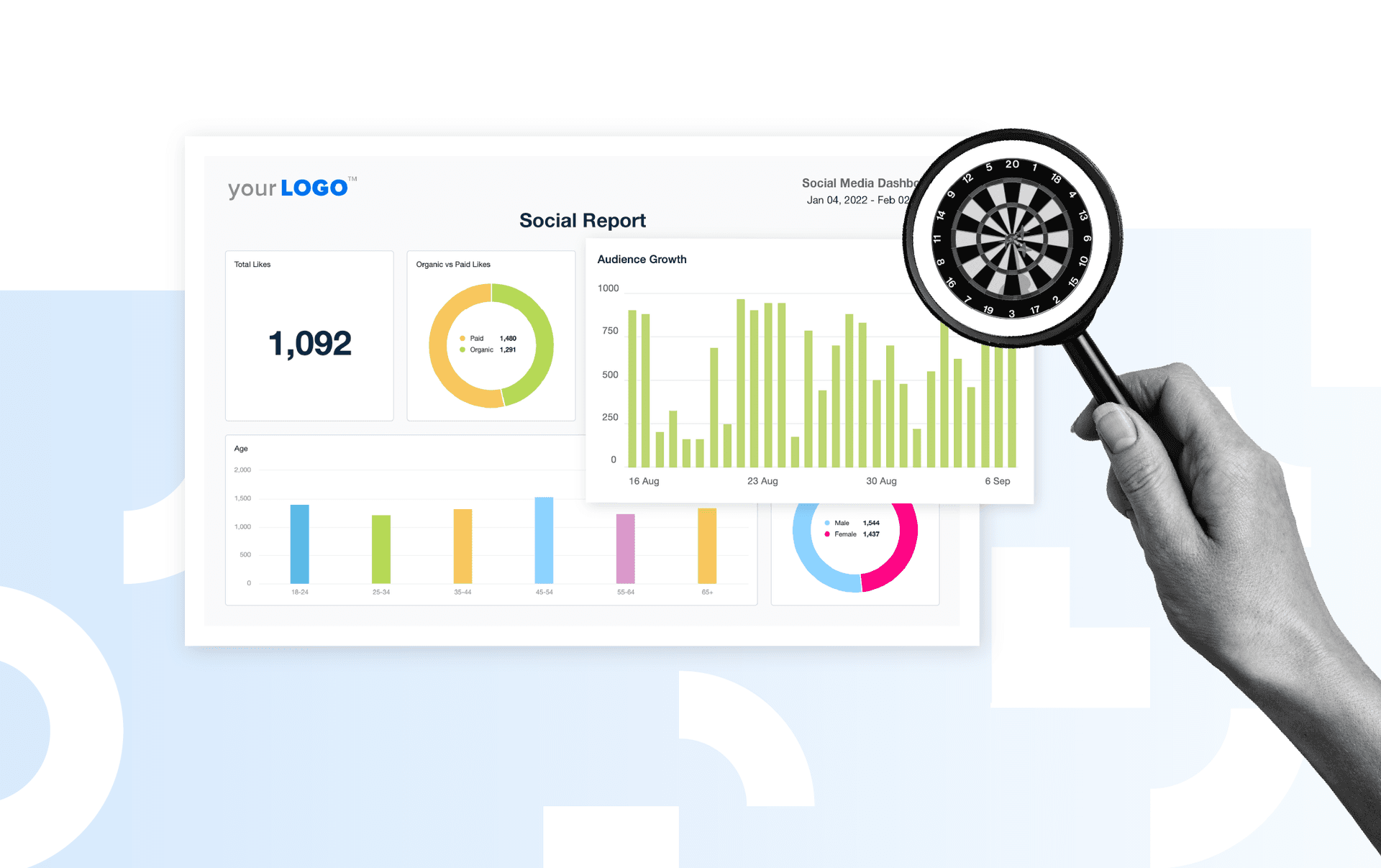Comments
Measure Engagement Levels
A high number of Comments is a green light to produce similar content.
Sentiment Analysis
Positive Comments validate successful strategies while Negative Comments signal a need for course correction.
Client Reports
Highlight a boost in Comments to show increased engagement.
Refine Content Strategy
Refine the content strategy by reviewing top-performing posts.
Why Comments Are Important
Comments are more than just virtual chatter; they help marketing agencies understand the level of engagement a campaign is garnering. When a piece of content—be it a blog post, social media update, or video—gets a lot of Comments, it's a sign that the content striking a chord with the target audience. And let's be honest, capturing the attention on busy social media platforms is half the battle!
Comments also offer unfiltered consumer sentiment. Marketing agencies get direct feedback on what’s resonating and what isn't through customer Comments, allowing for real-time adjustments to their clients’ marketing strategies.
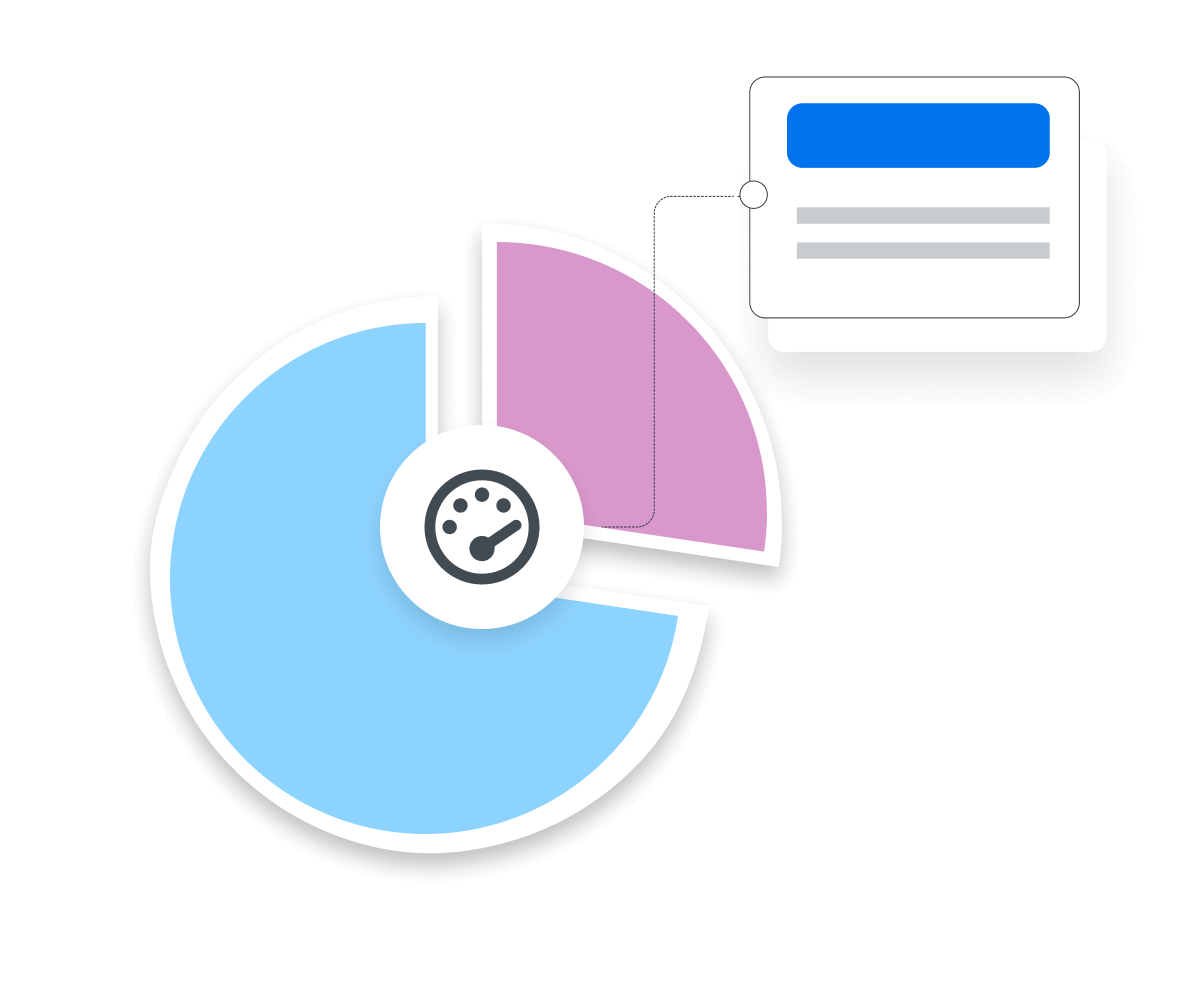
Stop Wasting Time on Manual Reports... Get Insights Faster With AgencyAnalytics
How Comments Relate To Other KPIs
Comments provide direct cues about how an audience interacts with content, which affects metrics like Engagement Rate and Click-Through Rate (CTR).
For example, an active Comments section often indicates compelling content, potentially increasing the likelihood that an audience will engage in other ways, such as by sharing the post or clicking on embedded links. A high Comment count often correlates with a higher Engagement Rate, adding context and depth.
Similarly, Conversion Rate also feels the ripple effects of Comments. If a piece of social content has numerous positive Comments and appears trustworthy, it positively influences the rate at which people take a desired action like signing up for a newsletter or making a purchase.

The Different Types of Comments
Understanding the various kinds of Comments offers insights for digital marketers. Social media Comments are perhaps the most recognized, appearing under posts and updates. These are quick, often informal reactions or thoughts, distinguished by the ubiquitous Comment bubble icon. Each social media platform fosters its unique style of commenting, from Twitter's concise responses to Instagram's visually-driven comments.
Blog or forum Comments, on the other hand, allow for more extensive discussions. Found at the end of blog articles and forum posts, they invite readers to delve deeper into the topic, ask questions, and engage in more detailed conversations. Recognizing the nuances between these Comment types is essential for tailoring communication strategies effectively in various digital contexts.
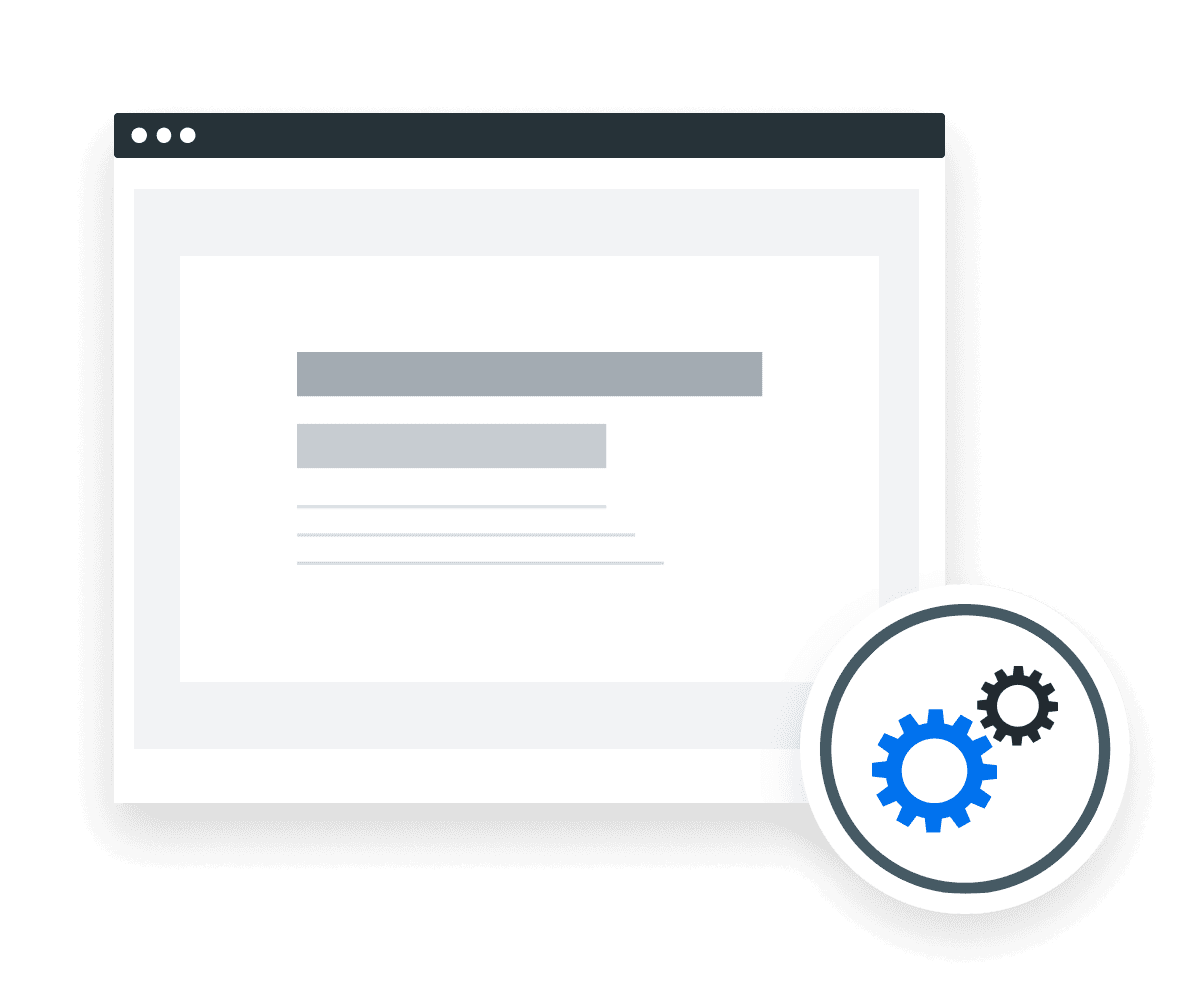
Understanding Comment Sentiment
In social media marketing, understanding the meaning of a social media Comment is crucial. Social media Comments range widely, from positive feedback to a negative Comment. Positive feedback often boosts brand image and customer satisfaction. Negative feedback, however, requires careful handling by a social media manager to mitigate any potential damage. Neutral Comments still provide valuable insights into audience perception.
Social media trolls, who leave Comments with the sole intent of provoking, are a unique challenge for social media managers. Such Comments disrupt meaningful conversations on social media channels. Recognizing and strategically addressing the different types of Comments, is a key skill for social media users and agencies alike.

How To Track & Measure Comments
To measure the Comments KPI, track the total number of Comments received on digital content across various platforms. This includes monitoring social media posts, blog articles, and videos. A comprehensive view requires aggregating data from all sources where audience interaction occurs, ensuring a complete understanding of user engagement. Tools like social media analytics dashboards simplify this process by automatically compiling and displaying Comment data.
Setting Comments Benchmarks and Goals
Looking at past performance sets a baseline for future engagement goals. Another method is back-calculating revenue targets. For example, if the agency knows that a particular volume of Comments typically correlates with a certain revenue, then work backward to set achievable Comment benchmarks.
To get more granular insights, consider segmenting Comments by type—questions, compliments, complaints, etc. This offers a more nuanced view of engagement and content effectiveness. Another avenue is sentiment analysis, which gauges the emotional tone behind the Comments. Additionally, looking at the timing of Comments is insightful. Are they clustered around the publication date, or do they accumulate over time? This provides clues about the content's longevity and ongoing relevance.
Why Comments Matter to Clients
Comments serve as instant customer feedback for clients. They show what's working and what's not, directly from the people who matter the most. High numbers of Comments usually mean the content is hitting the mark. They also make the content more visible on platforms with algorithms that reward engagement. Constructive Comments also help clients make service or product improvements.

Why Comments Matter to Agencies
For agencies, Comments are one part of social media management. Comments are less about validation and more about strategy. A high Comment count demonstrates an agency's ability to create compelling, engaging content that goes beyond superficial metrics like views or clicks.
An in-depth analysis of Comments also helps agencies sharpen their targeting. Knowing who Comments—along with what, when, and why–helps refine audience personas and tailor future content more effectively. An engaged audience means a happier client, and a happier client is a long-term client.

Automatically Pull Data From 80+ Marketing Platforms To Create Client Reports in Minutes.
Best Practices When Analyzing and Reporting Comments
Analyzing the Comments metric helps agencies understand a campaign's effectiveness and audience engagement.
Link Comments to Client Objectives
Always relate the Comments back to what the client wants to achieve, be it brand awareness or lead generation. This makes it easier to prove the value of a campaign.
Time-Frame Analysis
Look at how Comment volumes ebb and flow over weeks, months, or during specific campaigns. Seasonal trends or drops reveals what type of content resonates at different times.
Channel-By-Channel Breakdown
Don't just lump all Comments together. Break them down by social media platform, campaign, blog, or other channels to see where the most impactful conversations are happening.
Spot Trends and Anomalies
Keep an eye on social media pages for unusual spikes or drops in Comments. These could be linked to specific events or changes in content strategy and offer insights for future planning.
Align With Other Metrics
Comments should not be viewed in isolation. Compare them with other KPIs like engagement rate or conversion rate to get a fuller picture of campaign performance.
Visualize To Optimize
Charts and graphs make Comment data more digestible. They help quickly identify trends and outliers that may not be obvious in a spreadsheet.
Instagram Dashboard Example
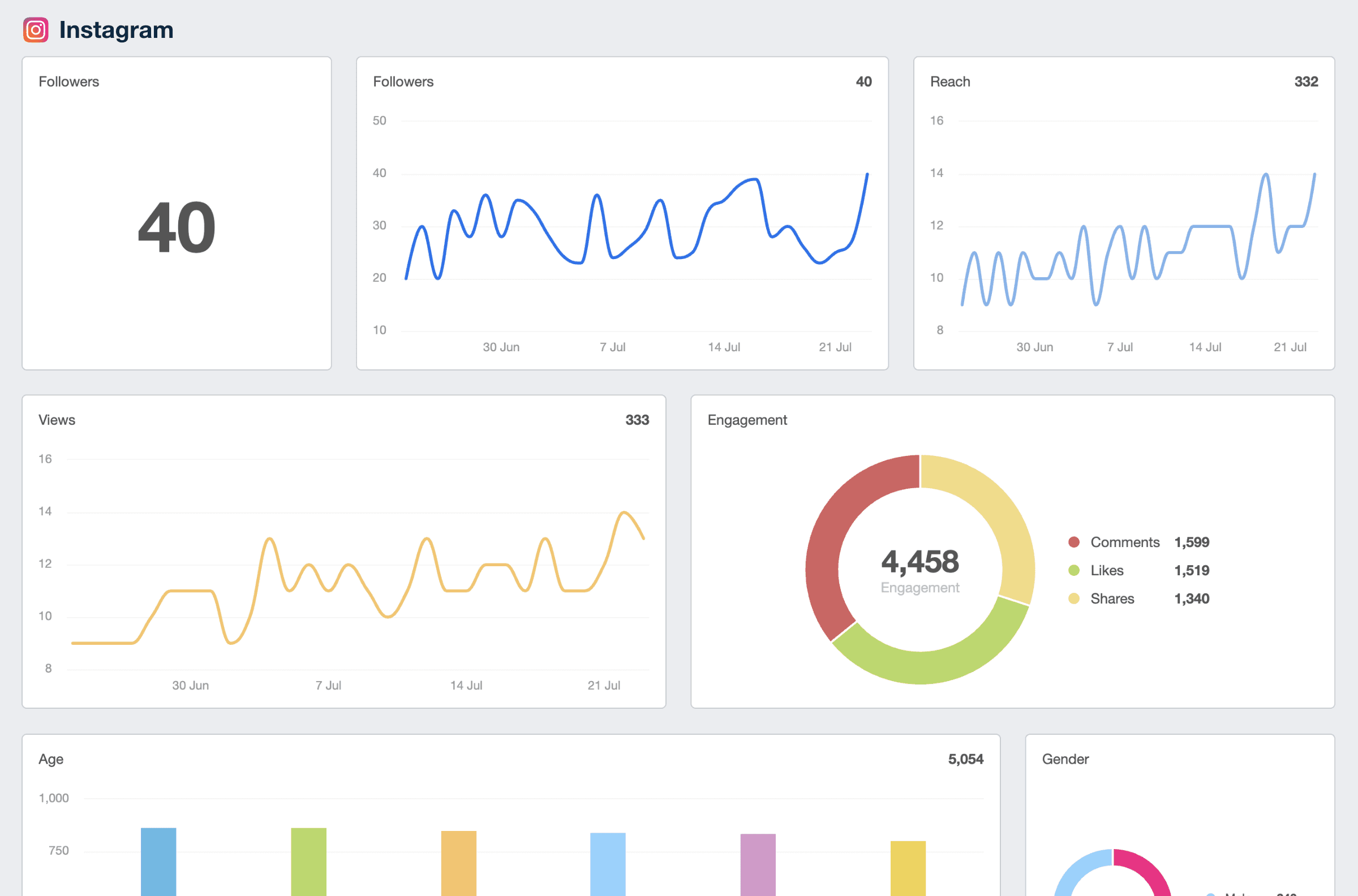
How To Generate More Comments
Boosting the number of Comments requires more than just posting content and hoping for interaction. It's about sparking curiosity, encouraging conversation, and offering value. Here are three tips to get that comment section buzzing!
Pose Open Questions
Ask open-ended questions at the end of posts to invite readers into a dialogue. This stimulates thoughtful discussion and increases the likelihood of getting more Comments.
Engagement-Friendly Content
Actively post content that encourages response and reaction. Unique, engaging, and relevant content typically inspires more Comments.
Respond Promptly
A quick reply to an initial Comment often triggers a more engaged conversation. This not only increases the Comment count but also signals to others that this space is active and engaging.
Related Blog Posts
See how 7,000+ marketing agencies help clients win
Free 14-day trial. No credit card required.


